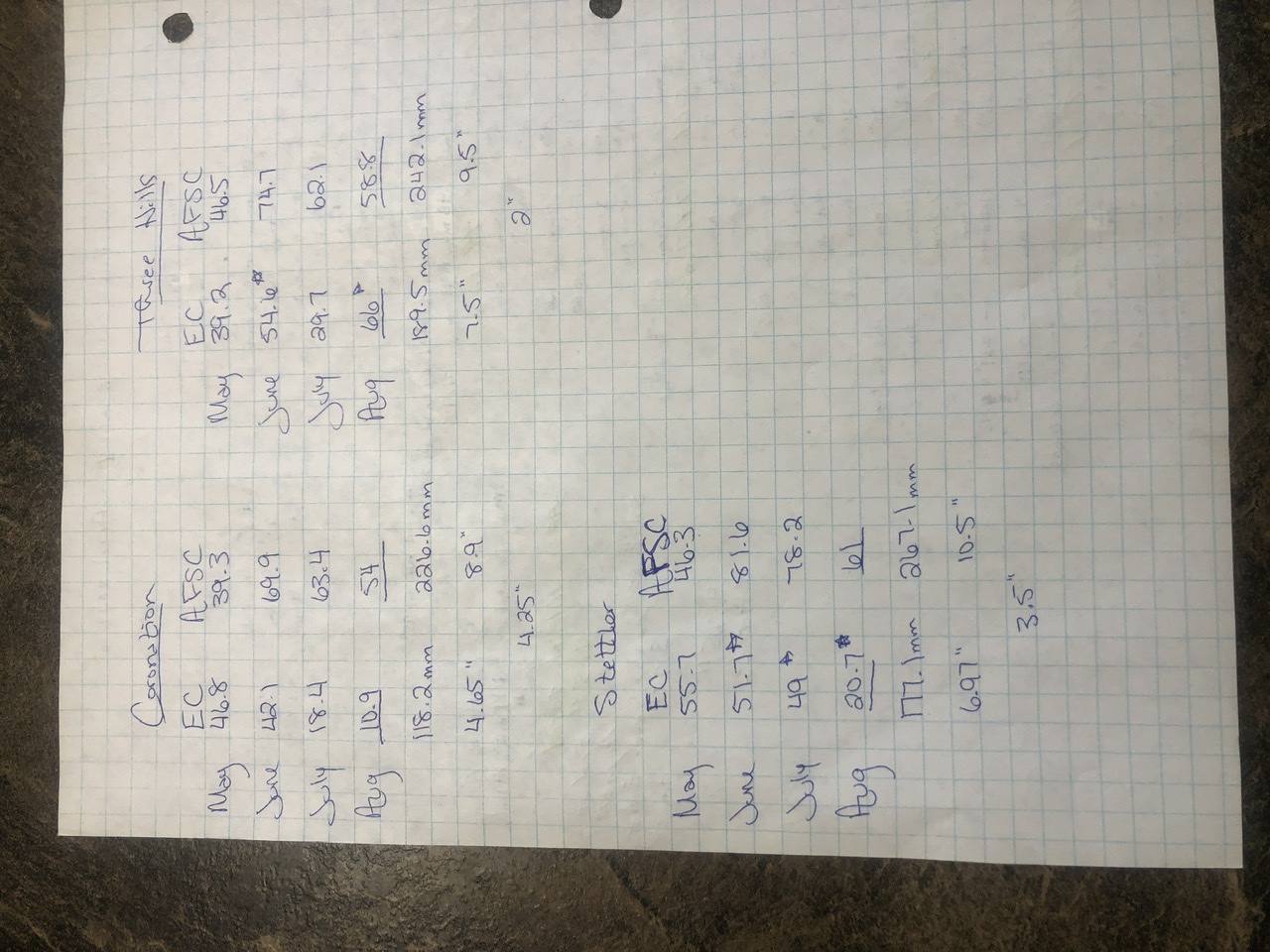I was just browsing some rainfall data this morning.
AFAWK all these locations are at the towns airports. They shouldn’t be very far away from each other to explain some freak thunderstorm (because there was lots of those this year…) causing the differences. Also it’s always the EC sites that seem to be far and away drier than the AFSC ones over the summer.

Also had an independent comparison with an AFSC station and the farms rain gauge, less than a quarter mile away. 4.25†difference. Absolutely no way a storm hit the AFSC site and didn’t touch the farm. So….
How does one decide which data is correct?
AFAWK all these locations are at the towns airports. They shouldn’t be very far away from each other to explain some freak thunderstorm (because there was lots of those this year…) causing the differences. Also it’s always the EC sites that seem to be far and away drier than the AFSC ones over the summer.

Also had an independent comparison with an AFSC station and the farms rain gauge, less than a quarter mile away. 4.25†difference. Absolutely no way a storm hit the AFSC site and didn’t touch the farm. So….
How does one decide which data is correct?
Comment